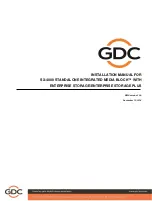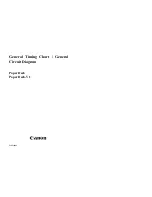
H
I
R
OLLER
- B
ELT
C
ONVEYORS
7. M
AINTENANCE
H
I
R
OLLER
, M
INI
R
OLLER
, L
O
R
OLLER
& H
I
L
IFE
7.2. B
ELT
T
RACKING
G
UIDE
P115506 R3
93
7.2.4. B
ELT
T
RACKING
M
ISALIGNMENTS
B
ELT
T
RACKING
- L
OADED
1. The belt is being loaded off-center. This must be corrected by ensuring that
material flows evenly down the back slope of all inlets, and that inlet skirts are
installed properly and are free from wear. See Section 4.6. and 5.3.1.
2. An internal bend called a belt camber (see page 93) could exist in the belt.
This is a belt defect and must be checked with a special procedure. Contact
Hi Roller Conveyors.
3. The belt has not been properly tensioned. See Section 5.4.5.
4. The belt has not yet stabilized. The belt and conveyor must be allowed to
break-in or run-in over a period of one to two days of operation without a
load.
5. The belt runs off-center at or near the splice, and then returns to the center
after the splice has passed - most likely caused by an improper splice instal-
lation where the splice is not square. The belt will have to be spliced square
by following the procedure. See Section 5.4.
6. The belt runs out of alignment in an area away from the splice and then
returns to the center. Inspect the area where the belt runs out of alignment for
cuts, burns, or other localized damage. The defective section of belt must be
replaced.
B
ELT
T
RACKING
- E
MPTY
1. The belt may not be contacting the center flat area of the idlers. This can be
caused by a stiff belt. This must be corrected; review belt specifications with
Hi Roller engineering department.
2. The above points 2 - 6 also apply to an empty belt.
7.2.5. B
ELT
C
AMBER
If unbalanced warp tensions exist in a conveyor belt, that belt will usually assume
a "crescent" or "banana" shape when laid flat on a horizontal surface. This
deviation from a straight line is called "camber."
To measure belt camber:
1. Unroll on a flat surface.
2. Grasp one end of the belt and drag in a perfectly straight line for 10’ to 20’. If
the belt is too heavy for one person to move, clamp the end to a fork lift and
drag.
3. At this point, the belt should lie flat. Unequal and unresolved warp tensions in
the belt will cause it to assume a "crescent" or "banana" shape.
• It is extremely important that the preceding procedure be followed to the
letter. It is very difficult to have both edges of the belt at the same thick-
ness--particularly wide belts. Accordingly, if we simply unroll the belt on a
flat surface, that belt will always unroll in a banana shape due to geome-
try, not unbalanced warp tensions. Dragging one end of the belt for 10’ to
















































